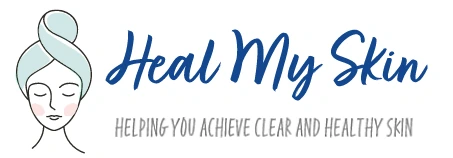Ever looked in the mirror and noticed those little brown spots that weren’t there before? You’re not alone! These spots, commonly known as age spots (or liver spots, though they have nothing to do with your liver), are something many of us deal with as we get older. Let’s break down everything you need to know about these pesky patches and what you can actually do about them.
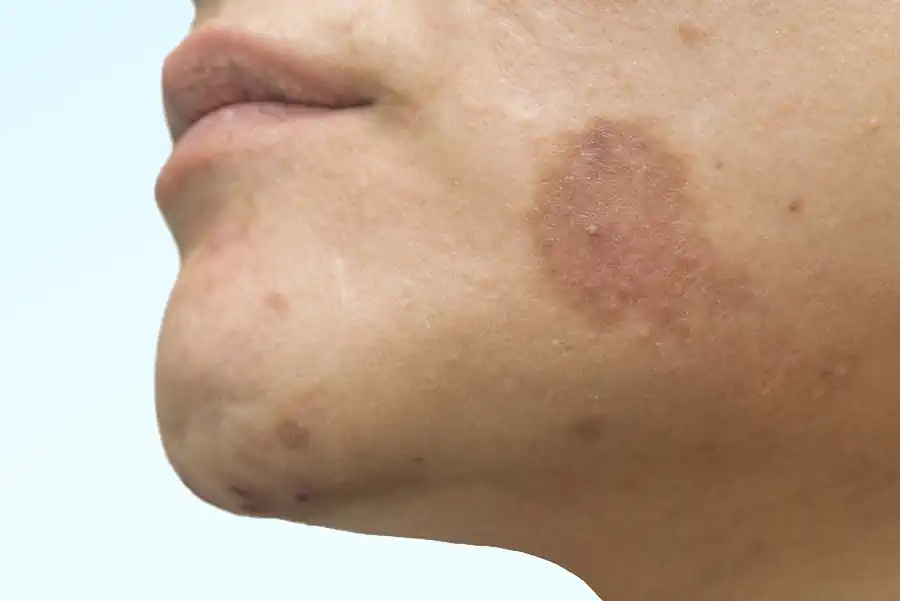
What Are We Really Talking About Here?
Think of age spots as your skin’s way of keeping a diary of all your time in the sun. They’re basically areas where your skin has produced extra melanin (that’s the pigment that gives your skin its color). These spots are:
- Usually flat and somewhat oval-shaped
- Range from light brown to black (like an over-brewed tea stain)
- Can be tiny like freckles or bigger than a dime
- Most likely to show up where the sun hits most often
Where Do Age Spots Like to Pop Up?
Your face and hands are the usual suspects, but really, these spots can appear anywhere that gets a lot of sun exposure. The most common spots are:
- Your face (especially your cheeks or forehead)
- The backs of your hands (think about how much sun they get when you’re driving!)
- Your shoulders
- Upper back
- Forearms
- Even the tops of your feet (sandal-wearers, this one’s for you)
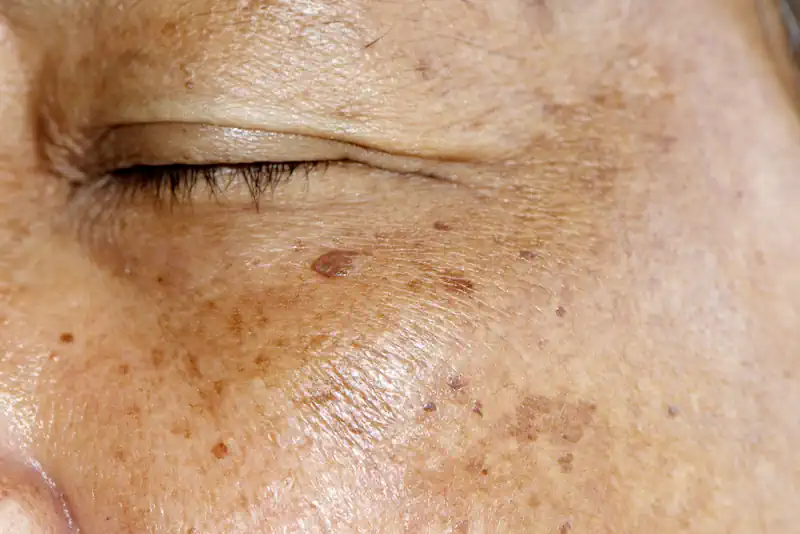
Why Do We Get Age Spots?
Here’s the deal: these spots are basically your skin’s response to years of soaking up UV rays. Think of it like this – every time you’re in the sun, your skin produces melanin to protect itself (that’s what a tan is). Do this enough times, and eventually, your skin starts producing melanin in concentrated spots instead of evenly across your skin.
You’re more likely to get them if:
- You’re over 50 (though they can start showing up much earlier)
- You have fair skin (though anyone can get them)
- You spend a lot of time in the sun
- You’re a fan of tanning beds (might want to rethink that one!)
- You tend to burn easily
- It runs in your family
How Can You Stop Them Before They Start?
The best defense is a good offense! Here’s what you can do to keep these spots from showing up.
Sun Protection is Your Best Friend
I get it – remembering sunscreen daily can be a pain. But it’s honestly the best way to prevent age spots. Here’s what you need to do:
- Slather on that sunscreen (SPF 30 or higher) every single day – yes, even when it’s cloudy!
- Set a reminder to reapply every 2 hours when you’re outside
- Rock a cute hat with a wide brim
- Find some stylish sunglasses you love
- Try to avoid being outside during peak sun hours (10 AM to 4 PM)
Already Have Some Spots? Here’s What You Can Try
Don’t worry – you’ve got plenty of options, from simple home treatments to professional procedures. Let’s start with the most affordable solutions.
Budget-Friendly Options
Let’s start with the stuff that won’t break the bank. These are treatments you can find at your local drugstore:
- Vitamin C serums (great for overall skin brightness too!)
- Products with niacinamide
- Alpha arbutin treatments
- Retinol products (start slow with these)
Just remember: these take time to work – we’re talking weeks or months, not days. But hey, good things come to those who wait!
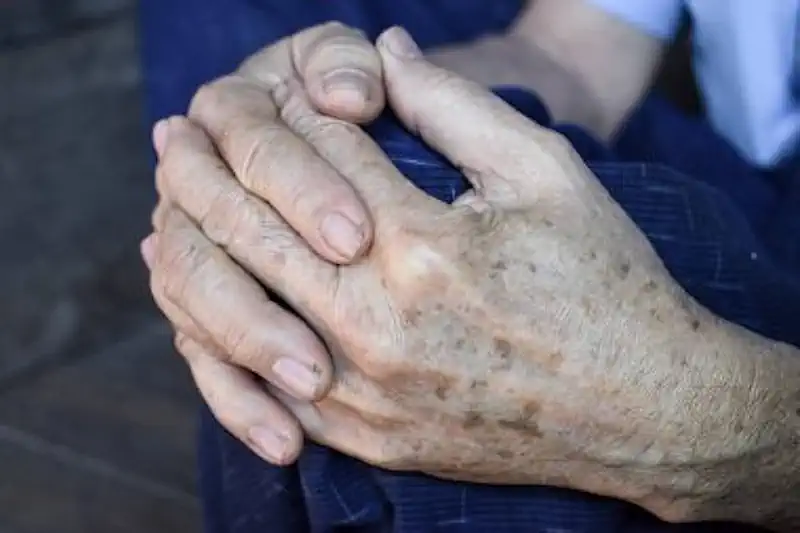
Prescription-Strength Solutions
If the over-the-counter stuff isn’t cutting it, your dermatologist might prescribe:
- Hydroquinone (the heavy hitter of skin lightening)
- Tretinoin (like retinol’s stronger cousin)
- Special creams that combine several ingredients
The Big Guns (Professional Treatments)
Ready to bring out the serious artillery? These treatments are done by professionals:
- Laser therapy (like a high-tech eraser for your spots)
- IPL treatments (think of it as a photo flash that helps fade the spots)
- Chemical peels
- Freezing them off (cryotherapy)
These usually work faster but they’ll cost you more, and you might need several sessions.
When Should You Get That Spot Checked Out?
While most age spots are totally harmless, it’s worth getting new spots checked out if they:
- Are really dark
- Have weird, irregular borders
- Are different colors
- Start changing
- Get itchy or red
- Bleed
Better safe than sorry, right?
The Bottom Line
Here’s the thing: age spots are totally normal and completely harmless. They’re just your skin’s way of showing that you’ve lived a life outdoors (which isn’t a bad thing!). While you can definitely treat them if they bother you, you can also rock them with confidence – they’re proof of all those wonderful sunny days you’ve enjoyed!
If you do want to treat them, start with the simple stuff first:
- Get serious about sunscreen (it’s never too late to start)
- Try some over-the-counter products
- If those don’t give you the results you want, chat with a dermatologist about stronger options
Remember: everyone’s skin is different, so what works for your best friend might not work for you. Be patient with treatments, and most importantly, be kind to yourself – those spots are just tiny reminders of all the fun you’ve had in the sun!
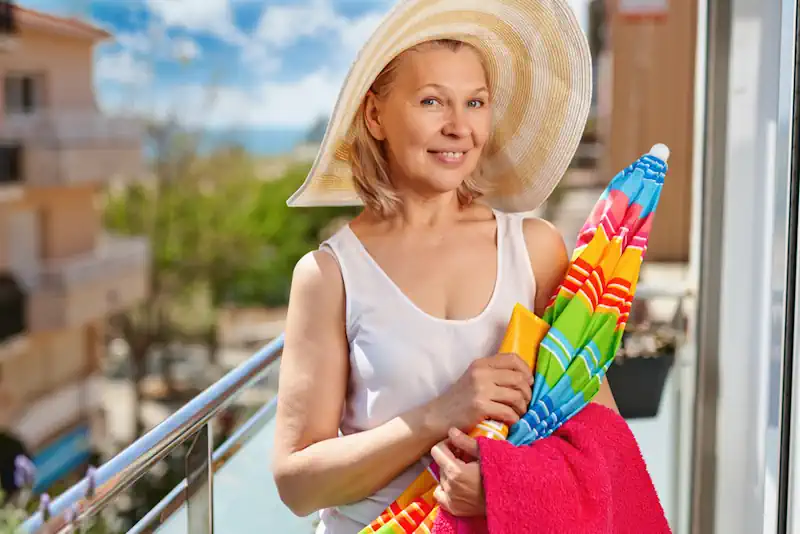
Want to Learn More?
Check out these reliable sources (links go to their search results for “age spots”):
They’ve got lots of great info if you want to look deeper into this topic!
